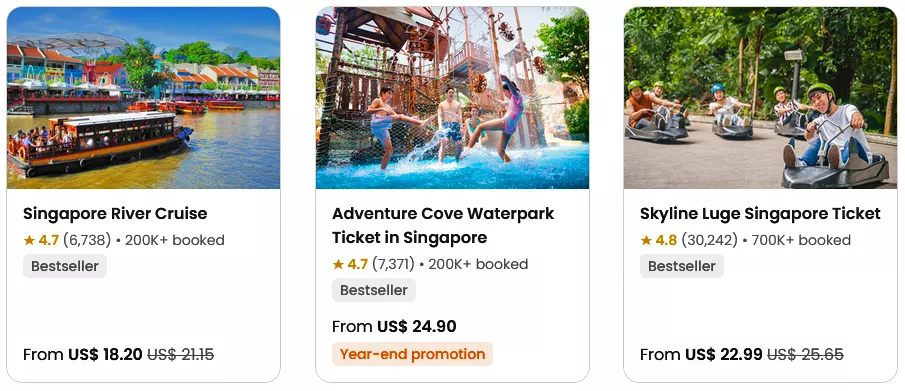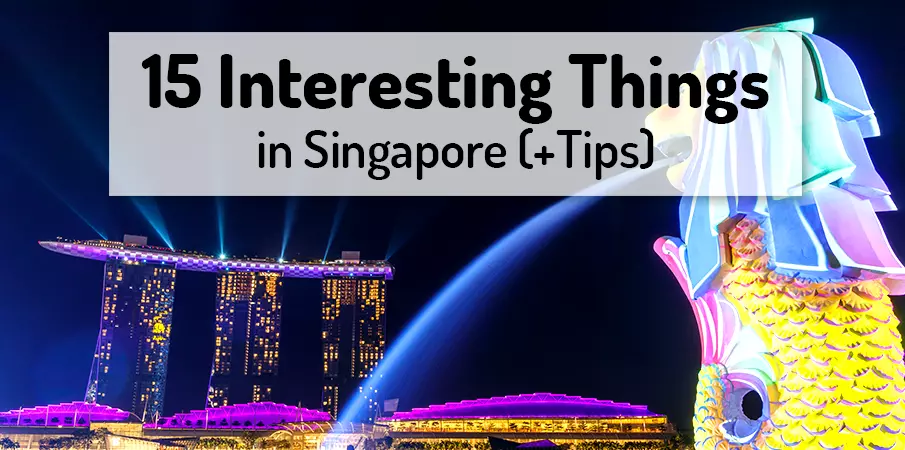
Singapore: A Modern Gem in Southeast Asia.
-
- Imagine a city/country where the past intertwines with the future, where skyscrapers touch the heavens, and exotic cuisine tantalizes all senses. That is Singapore, a small island nation in the heart of Southeast Asia, standing as a decorative gem on the world map. Despite its modest geographical dimensions, its cultural and historical legacy has immense breadth, enticing travelers from around the globe.
Unique Ethnic Harmony in Singapore.
-
- Singapore is not just a place but a fascinating story that combines ethnic diversity, modern architecture, and admirable respect for nature. Openness to the world and a desire to innovate are reflected in every step, immersing visitors in a world where tradition and modernity compose a unique symphony.
- One of the most surprising features of Singapore is its ethnic mosaic. Visitors are welcomed into a world where they encounter not only the arches of modern architecture but also diverse cultures and languages that form a proud kaleidoscope of local identity. Walking through the streets of Kampong Glam, Little India, or Chinatown allows you to witness harmonious dances of distinct cultures blending in the common rhythm of modern Singapore.
History and Modernity in Perfect Symbiosis.
-
- The history of the city, which emerged from a small port, is reflected in old buildings, monuments, and historic quarters. In one moment, you can stroll around modern skyscrapers in the Central Business District, and in the next moment, discover quiet alleys of ancient temples and markets where the air is filled with the aroma of exotic spices.
- Equally fascinating are the local customs and traditions that permeate everyday life. Singapore is a land where respect for nature intertwines with modern technology, and where daily rituals reflect a deep reverence for history. Why chew gum in public when you can savor the beauty of clean and well-maintained public spaces?
Culinary Paradise and Interesting Asian Cuisine.
-
- In addition, Singapore boasts its gastronomic scene and an interesting and diverse cuisine and dishes, which not only reflect cultural diversity but also the art of combining flavors and aromas from around the world. From traditional dishes served at hawker centers to culinary adventures in luxury restaurants, each morsel and each taste explosion has its own story and history.
- This small country is also a symbol of a modern approach to life. It’s not just about the future; it’s about experimenting with it. In short, Singapore is not just a city but a living story that is constantly evolving, attracting adventurers and enthusiasts from all corners of the world. So, step into this world of contrasts and discover the beauty and charm of Singapore, where the past meets the future in exquisite harmony.
BOOK a TOUR / ACTIVITY in Singapore ➜
15 Interesting and Useful Facts about Singapore:
1. Cultural Kaleidoscope of Southeast Asia
Singapore, a cosmopolitan city with a rich history and amazing contrasts, captures the hearts of visitors worldwide with its unique ability to blend diverse cultures, traditions, and languages into a singular and harmonious whole. Its identity is like a cultural kaleidoscope, where all colors and patterns come together to form a captivating picture.
Diversity in One City
-
- When it comes to a „multicultural melting pot,“ Singapore stands as the brightest example of this concept. This small country, with geographical dimensions that may surprise, is home to a wide range of ethnic groups, each bringing its own history, traditions, and cuisine. The country takes pride in being the home of the Chinese, Malays, Indians, and Peranakan ethnic groups, creating a colorful mosaic of everyday life. Walking through the city streets, you can see distant traditions intertwining with modern life, creating a unique and captivating environment.
Cultural Delight in Every Corner
-
- The multicultural essence of Singapore is most evident in neighborhoods like Kampong Glam, Little India, and Chinatown. In Kampong Glam, home to the historic Sultan Mosque, we encounter Malay influence, while in Little India, the streets are filled with the colors, scents, and hustle of Indian culture. The Chinese quarters offer a glimpse into China’s rich heritage, with markets, temples, and traditional shops. Each neighborhood has its own character, but throughout the city, you can see how these diverse cultures interact and influence each other. It’s like an artistic masterpiece where each cultural spot contributes to the overall image, highlighting the beauty of diversity.
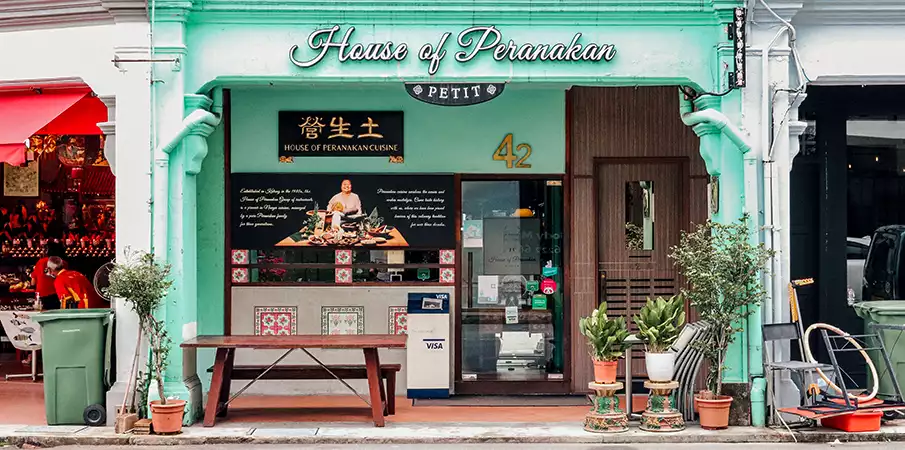
2. Linguistic Harmony of Singapore
Singapore can boast not only its towering skyscrapers and modern architecture but also a unique linguistic harmony that serves as a cornerstone for mutual understanding in this multicultural oasis.
Four Languages, One Heart
-
- Singapore, with respect for various ethnic groups, officially uses four languages: English, Mandarin, Tamil, and Malay. This linguistic palette is not just a means of everyday communication but symbolizes unity in diversity.
Cultural Interweaving of Words
-
- Languages in Singapore are much more than mere tools of communication; they are a connecting element among different communities. The education system includes the teaching of multiple languages, reinforcing cultural interweaving and contributing to respect for various cultural heritages.
Global Meeting Places of Conversation
-
- Thanks to its linguistic diversity, Singapore becomes a place where worlds meet and interact. Visitors and locals alike have the opportunity to listen to different languages and explore diverse cultural perspectives, creating an open and welcoming atmosphere.
Final Thoughts: Words as Bridges to Understanding
-
- The linguistic harmony of Singapore is not just an aesthetic element but a key factor in building a unified and diverse society. In this small island state, words become bridges that connect people from different cultures, creating a unique harmony in distant linguistic worlds.
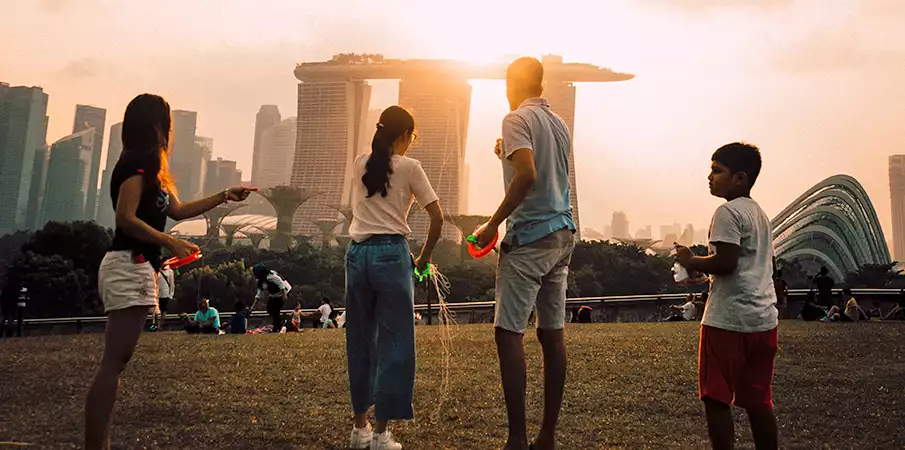
3. Marina Bay Sands + Gardens by the Bay
Singapore, a city of contrasts and architectural wonders, hosts two icons that celebrate modern innovation and stunning landscapes. Marina Bay Sands and Gardens by the Bay are not only architectural gems but also places that draw visitors into a futuristic world.
Marina Bay Sands: Symbol of Luxury and Height
-
- With its distinctive shape of three towers connected by an enormous infinity pool, Marina Bay Sands looks like an architectural dream. This structure, seemingly lost in the heights, is not just a luxury hotel with a casino but also a space for shopping, dining, and observation decks offering breathtaking views of Singapore’s skyline. Visitors can stay here and enjoy views from the rooftop pool.
Gardens by the Bay: Natural Oasis in the City
-
- On the opposite side of Marina Bay lies Gardens by the Bay, where futuristic architecture meets nature. Supertrees, artificial trees covered with plants, create an unforgettable sight against the sky. In the world’s largest greenhouse, Flower Dome, and in the Cloud Forest greenhouse, you can explore an extensive collection of exotic plants and enjoy a refreshing atmosphere. This place ranks among Singapore’s most visited attractions.
Synergy of Beauty and Innovation
-
- Marina Bay Sands and Gardens by the Bay are not just architectural wonders but also places where the beauty of nature meets modern innovation. These two locations provide a contrasting view of Singapore, where luxury and nature form a harmonious duet. Visitors can experience glimpses of the future while appreciating the beauty of natural elements that adorn this urban paradise.
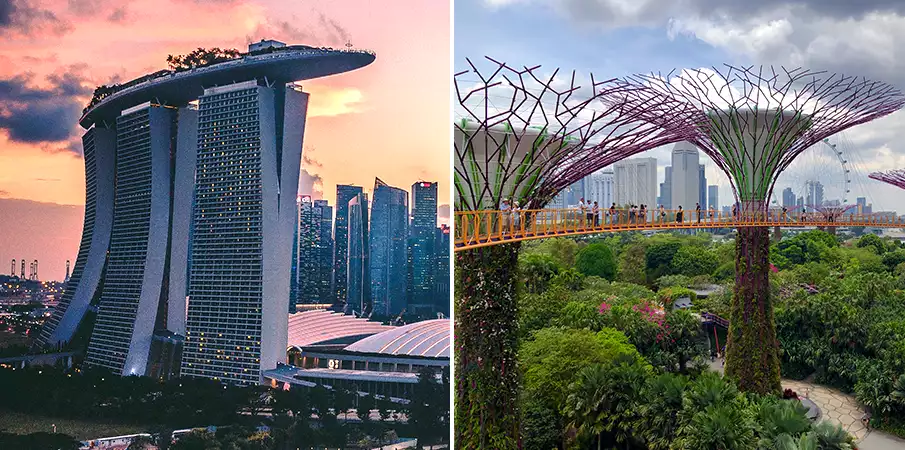
4. Happiness in Numbers
In the small island state of Singapore, where the past intertwines with modernity, numbers play a significant role in shaping everyday life and cultural traditions. In this multicultural paradise, numbers are not just mathematical values; they are the key to happiness and prosperity. One of the most interesting aspects of this numerical fascination lies in the approach to specific numbers that carry significant cultural meanings.
Number 8: Symbol of Luck and Prosperity
-
- In Singaporean culture, number 8 is considered particularly auspicious and favorable. This belief has its roots in the fact that, in Mandarin Chinese, the pronunciation of the number 8 („ba“) resembles the pronunciation of the word for wealth and prosperity („fa“). Consequently, the number 8 is associated with finances and general well-being. It’s not surprising that the number 8 often appears in company names, vehicle registration numbers, and even property prices.
Number 4: Symbolic Shadow in Numerical Culture
-
- Conversely, number 4 holds a different meaning in Singaporean culture. Since the pronunciation of the number 4 („si“) in Mandarin Chinese sounds similar to the word for death, which also begins with „si,“ this number is approached with caution and sometimes even fear. Therefore, it is often avoided when choosing registration numbers or deciding on property names. This cultural belief in the significance of the number 4 is a clear indication of how strong an influence numerology can have on daily decision-making.
Numerology in Everyday Life
-
- While some societies may view numerology as marginal or superficial, in Singapore, it becomes part of everyday life. From choosing numbers on license plates to setting property prices and even selecting wedding dates, numbers become a crucial factor in decision-making. This highlights a deep respect for traditional values and a belief in the power of numerical symbolism.

5. Preserving Traditions in Modernity
At the heart of Singapore, a modern metropolis full of skyscrapers and innovation, runs a thread of tradition and cultural heritage that persists despite waves of modernity. This fusion of the past and the future creates a unique fabric that gives Singapore its distinctive character.
Chinatown: Culture and Crafts
-
- In Chinese neighborhoods like historic Chinatown, tradition becomes a living part of everyday life. Ancient temples, traditional shops, and skilled craftsmen provide an authentic glimpse into Chinese culture. Visitors can immerse themselves in the world of traditional Chinese medicines or admire the craftsmanship of handmade products.
Little India: Colorful Slice of Indian Culture
-
- In Little India, colors, scents, and musical rhythms pulsate, reminiscent of the homeland, India. Markets with exotic spices, temples, and traditional shops bring Indian culture and traditions to life. Even in modern times, you can observe the preparation of traditional dishes or witness rituals in local temples.
Kampong Glam: Malay Elegance and History
-
- Kampong Glam, formerly known as the Malay quarter, is home to the historic Sultan Mosque and beautiful architecture. Despite modern trends, authentic Malay cuisine and shops offering traditional clothing and crafts can be experienced here.
Peranakan Culture in Katong
-
- In the Katong district, Peranakan culture comes to life, a blend of Chinese and Malay traditions. Colorful houses known as „shophouses“ showcase the architectural beauty of this area. The local Peranakan cuisine is a cultural treasure that entices visitors to taste traditional dishes.
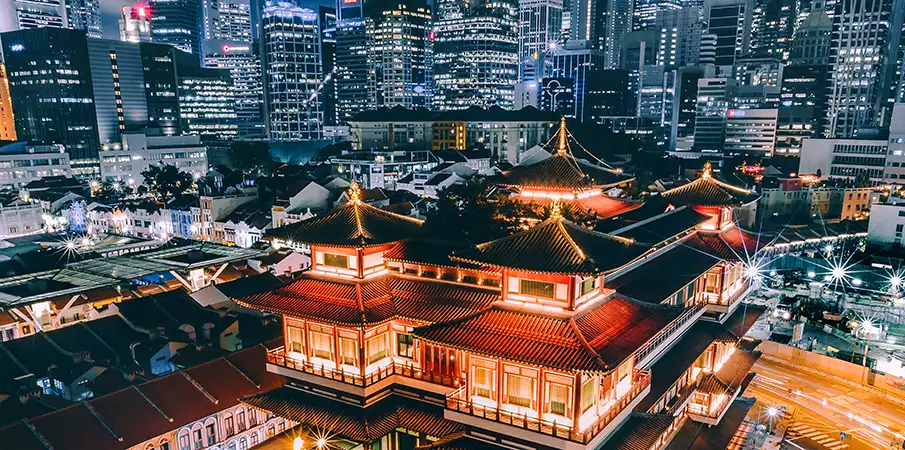
6. Hawker Center Culture in Singapore
In Singapore, a culinary experience is not just a matter of taste but also a journey into the heart of Singaporean culture. Hawker centers, the most famous and beloved, represent a culinary paradise where aromas, flavors, and traditions blend. These environments are an integral part of local life, offering not only great dishes but also a unique insight into daily life in this small island state.
Diversity of Taste Sensations
-
- Hawker centers are a culinary melting pot where various taste preferences converge. From traditional Singaporean dishes like laksa, Hainanese chicken, and chili crabs to more exotic offerings like satay, rojak, and nasi lemak, every visitor has the opportunity to explore a diverse range of flavors.
Stalls Where Stories Mix with Aromas
-
- Hawker centers are not just about food; they are also about stories. Each stall is a small narrative, from family recipes passed down through generations to innovations by younger chefs. These stalls bear witness to history, and each dish they serve is full of passion and tradition.
Cultural Meeting Place
-
- Hawker centers are places where different ethnic groups, generations, and cultures converge. It’s not about where you come from but about your taste memory. Locals and tourists gather at tables, share food, and discuss new taste discoveries. This place is a symbol of harmony created by diverse cultural influences.
Affordability and Local Culinary Talent
-
- Despite their uniqueness, hawker centers are affordable for everyone. Singaporeans are accustomed to tasting some of the best dishes at reasonable prices in these places. This affordability also supports local culinary talent, allowing them to thrive without the need to own a standalone restaurant.
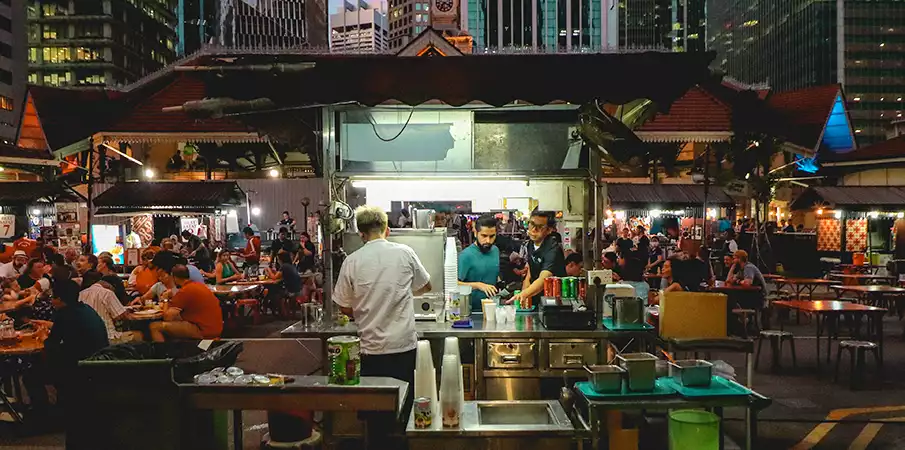
7. Singaporean Coffee and Cafés
In the heart of Singapore, the city wakes up every morning under the aroma of fresh coffee. Singaporean coffee is not just a beverage; it’s a ritual intertwined with tradition, culture, and community. Here, coffee enthusiasts come together, discuss life, and share one of the most distinctive elements of Singaporean daily life.
Kopi and Kaya Toast: Breakfast Classic
-
- For lovers of authentic Singaporean breakfast, the inevitable combination is kopi (coffee) and kaya toast (toast with coconut jam). This simple yet bold combination has become a classic in local coffee shops known as kopitiams. Here, residents of Singapore gather to enjoy moments of tranquility and kickstart their day.
Kopi-O, Kopi-C, Teh Tarik: Coffee Language
-
- Ordering coffee in Singapore is almost like choosing from a special language. Kopi-O means black coffee with sugar, while Kopi-C adds condensed milk. Teh Tarik is an artistic beverage where tea and milk are pulled together to create a frothy layer. Each of these drinks tells its story and reflects the unique palette of taste preferences in Singapore’s coffee culture.
Square Cafés: Meetings and Conversations
-
- Cafés in squares and in historic districts like Chinatown or Little India are places where residents and visitors gather. Here, it’s not just about drinking coffee but also about sharing stories, conversations, and occasional nods to the past. These cafes are spaces where laughter echoes, smiles abound, and a lively community thrives.
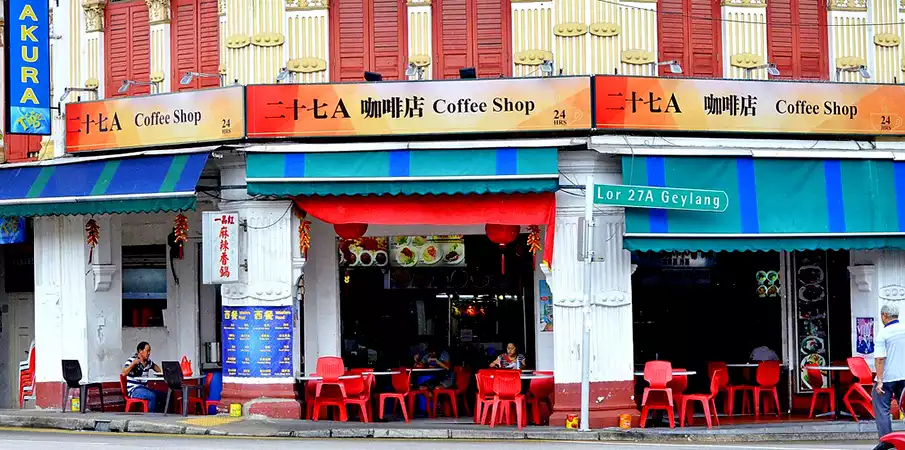
8. Cleanliness and Order in Singapore
In a world of cities filled with chaos and noise, Singapore stands out as an oasis of cleanliness and order. This Southeast Asian city-state has earned its reputation through meticulous care of public spaces and a commitment to maintaining order. Every corner and square in Singapore reflects its careful efforts to preserve aesthetic appeal and comfort.
Exemplary Public Spaces
-
- Public spaces in Singapore are impeccably maintained, whether they are parks, squares, or streets. The city emphasizes greenery, and public areas are equipped with trash bins to minimize litter. Anyone strolling through the streets of Singapore will notice the cleanliness that has become an integral part of its identity.
Personal Responsibility for Cleanliness
-
- In Singapore, there is a connected relationship between residents and their environment. Most residents are brought up with a sense of responsibility for their own cleanliness. People bring their own bags to minimize the use of disposable plastic bags, and public toilets are often equipped with disinfectants freely available to everyone.
Strict Waste Control and Recycling
-
- Singapore boasts an efficient waste management and recycling system. Waste is systematically collected, and landfills are minimized. Recycling programs encourage residents to recycle and manage waste properly. This initiative plays a crucial role in maintaining cleanliness and caring for the environment.
Emphasis on Order in Everyday Life
-
- In Singapore, order is not just about physical space but also about the daily lives of its residents. Local culture promotes adherence to rules and principles of decent behavior. Residents respect rules in public transportation, on sidewalks, and in stores, creating a harmonious environment for everyone.
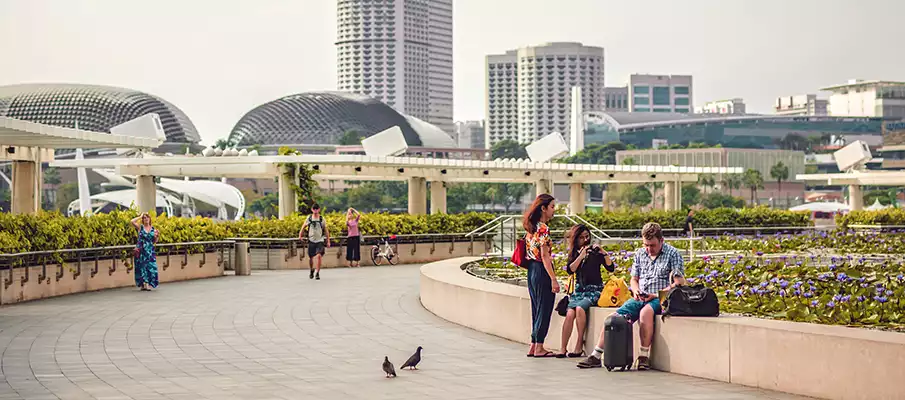
9. Historical Narratives at Every Turn
Strolling through the streets of Singapore is not merely a walk through a landscape of modern architecture; it is a journey through time. The history of this city-state, once composed of fishing villages, is a living tale unfolding at every step. Exploring ancient quarters and historical landmarks allows you to experience the captivating story of Singapore’s evolution and transformation.
Colonization and British Influence in Colonial District
-
- The Colonial District, the former heart of British colonial rule, is home to historical buildings such as Victoria Theatre, Raffles Hotel, and the Parliament House. A walk through this area transports you to the era of colonization when the British controlled this strategic area, influencing its architecture and culture.
Chinese History in Chinatown
-
- Chinatown in Singapore is not only a place for traditional shopping and excellent food but also an area rich in Chinese history. Historical temples and community houses reveal stories of immigrants and how the Chinese community dealt with challenges at the beginning of their stay in Singapore.
Malay Spirit in Kampong Glam
-
- The historic Kampong Glam district is home to the beautiful Sultan Mosque and the rich Malay history. Strolling through the narrow lanes of this district takes you back to a time when Singapore was a small port city where various cultures and traders converged.
Peranakan Culture in Katong
-
- Katong, with its colorful shophouses, is a window into the world of Peranakan culture. The stories of these people, descendants of Chinese and Malay immigrants, are reflected in every detail of these traditional houses and in every bite of Peranakan cuisine.
Modern Stories in Marina Bay
-
- In contrast to historical quarters stands the modern gem, Marina Bay. The stories of this futuristic square unfold in the gleaming skyscrapers, on the majestic Helix Bridge, and in the unique design of Marina Bay Sands.
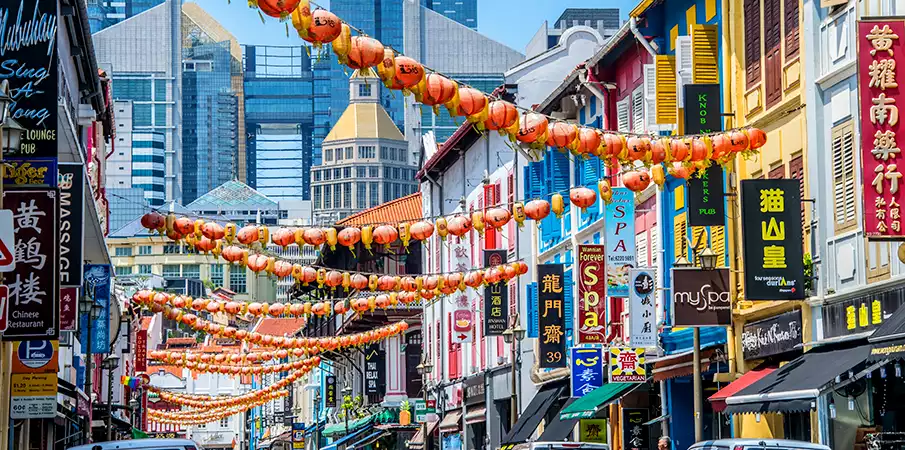
10. Innovative Technology in Singapore
Singapore, a city known for its modernity and vision, has become a hotbed for innovation and cutting-edge technology. This small city-state not only preserves its history but also leads the way into the future through extensive investments in science and technology. Here is a look at some innovative technologies that form an integral part of the Singaporean ecosystem.
Smart City Initiatives: Intelligent City of the Future
-
- Singapore has pioneered smart city technologies. From integrated public transportation systems to smart lighting systems and air quality monitoring, the city invests in technologies that improve efficiency, sustainability, and the quality of life for its residents.
Autonomous Transport Vehicles: Journey to the Future of Transportation
-
- Singapore explores the possibilities of autonomous transport vehicles, such as self-driving cars and drones for personal transportation. These innovations have the potential to not only change how we move around the city but also reduce traffic congestion and increase efficiency.
Blockchain and Digitalization: Secure and Efficient Future of Finance
-
- Singapore actively pursues the digitalization of the financial sector through blockchain technology. This step into the digital economy enhances transaction security and increases the efficiency of financial operations, positioning the city at the forefront of global financial centers.
Innovation Ecosystem: Support for Startups
-
- Singapore actively supports innovation and entrepreneurship through its innovation ecosystem. Startups in fintech, biotechnology, and artificial intelligence find an ideal environment for growth and development thanks to various support systems and initiatives.
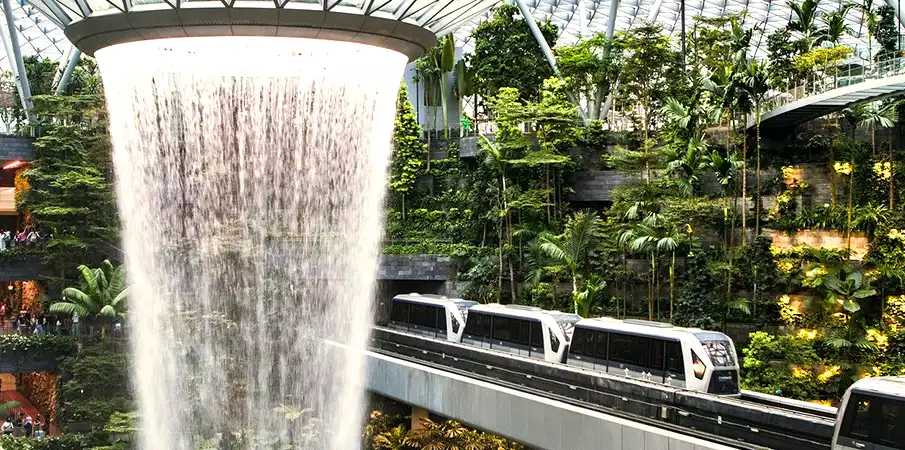
11. Singapore’s Green Philosophy
Singapore, although surrounded by skyscrapers and modern architecture, beats with a green philosophy that combines urbanity with environmental care. This philosophy manifests in various aspects of Singaporean life, showcasing how the city respects and integrates nature into its daily rhythm.
Vertical Gardens and Green Roofs: City in Symbiosis with Nature
-
- One of the most striking elements of Singapore’s green philosophy is the vertical gardens and green roofs that adorn many skyscrapers. These innovative concepts not only enhance the city’s aesthetics but also support biodiversity, reduce the heat effect, and create a pleasant environment for residents.
Preserving Green Spaces: Parks and Nature Reserves
-
- Singapore emphasizes the preservation of green spaces in the city. The Botanic Gardens, home to the impressive National Orchid Garden, and parks like Gardens by the Bay are evidence of how the city invests in preserving natural spaces where residents can relax and connect with nature.
Waste Reduction and Recycling: Eco-friendly Habits
-
- Singapore actively seeks to minimize waste and promotes recycling. Residents are encouraged to responsibly handle waste and utilize recycling facilities. This effort to reduce the ecological footprint aims to keep the city sustainable for future generations.
Biodiversity Conservation: Ecosystem Balance
-
- Within Singapore’s green philosophy, attention is also given to biodiversity conservation. The city invests in programs to protect endangered species, restore mangrove areas, and maintain balance in ecosystems.
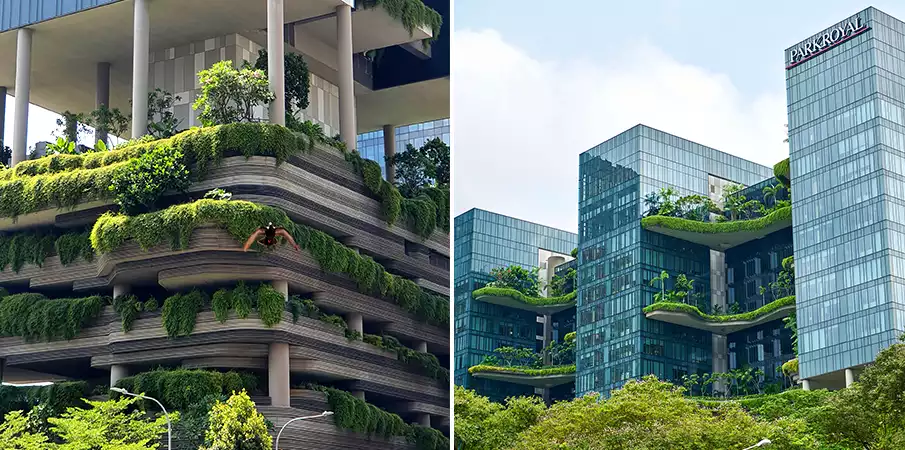
12. Night and Lights in Singapore
Singapore, the city that never sleeps, offers stunning nocturnal experiences bathed in the glow of lights that literally adorn the city. The night in Singapore is not just a time of tranquility but also a time when the city transforms into a magical landscape of lights and colors that dazzles visitors and residents alike.
Marina Bay Skyline: Picture of Modern Elegance
-
- Marina Bay, with its iconic Marina Bay Sands hotel and skyscrapers, transforms into a panorama adorned with thousands of lights at night. The light show that enlivens building facades creates a fairytale atmosphere, where modern design merges with the magic of the night sky.
Gardens by the Bay: Magic of Supertrees at Night
-
- The Supertrees in Gardens by the Bay are majestic during the day but transform into luminous giant structures at night. Colorful lights dancing to music create a mesmerizing show that enchants all visitors. A stroll among these luminous giants is like a magical fairy tale in the heart of the city.
Light Shows at Marina Bay Sands: Dazzling Light Spectacles
-
- Marina Bay Sands is not just an architectural icon; it is also home to several unforgettable light shows. While you can admire the night panorama of the city from the outdoor pool on the hotel’s roof, fantastic light projections on the hotel’s facade immerse viewers in a world of colors and fantasy.
Clarke Quay: Nightlife with a Splash of Light
-
- Clarke Quay, a famous waterfront bustling with nightlife, transforms into an entertainment zone full of lights and music at night. Colorful neon lights along the Singapore River create an atmosphere that attracts those seeking excitement and joy in the nighttime environment.
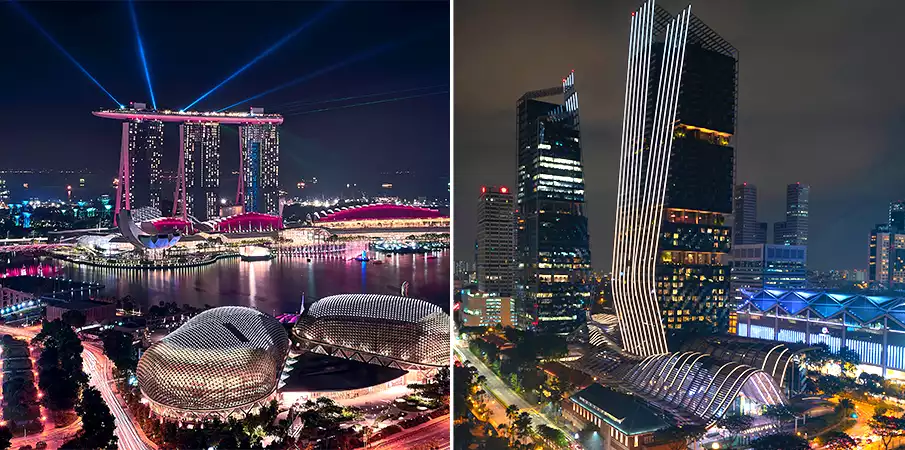
13. Educated Society in Singapore
Singapore, small in size but immense in significance, can boast of being home to one of the most educated societies in the world. Here, not only do the lights of modern architecture shine, but also the lights of knowledge and intellect. Education in Singapore has become a key to its success and innovation.
Quality Education from Early Years: Foundation of Success
-
- Singapore’s education system ranks among the best globally. From an early age, emphasis is placed on developing fundamental skills and critical thinking. School programs are designed to cultivate students‘ abilities and prepare them for the competitive global environment.
Internationally Recognized Universities: Academic Excellence
-
- Singapore can be proud of its internationally recognized universities, offering not only quality education but also supporting research and innovation. Universities in Singapore are known for their academic excellence and attract students from around the world.
Vocational Training and Development: Innovation in Education
-
- Education in Singapore is not just about theory; the city also emphasizes vocational training and the development of practical skills. This ensures that graduates are not just theorists but also practically skilled professionals ready for the challenges of the modern work sphere.
Culture of Lifelong Learning: Continuous Growth
-
- Singapore recognizes that education is not just a matter of school years; it is a lifelong process. The culture of lifelong learning is supported by various initiatives and programs that provide opportunities for further education and continuous growth in the professional sphere.
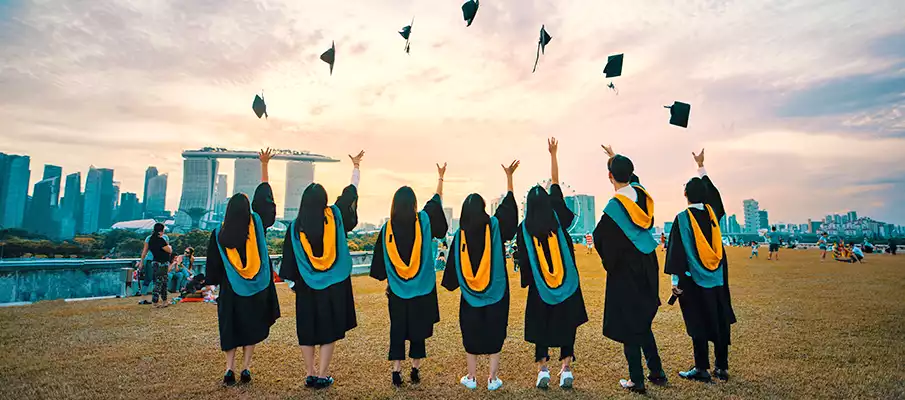
14. Singapore’s Willingness to Experiment
In the heart of Southeast Asia lies Singapore, a city constantly evolving into a laboratory of experiments and innovations. Singapore’s willingness to experiment is not just a philosophy; it is a way of life that propels the city forward, allowing it to become one of the most progressive in the world.
Innovative Startup Culture: Breaking Boundaries
-
- Singapore boasts a thriving startup culture that attracts entrepreneurs and innovators from around the world. The city is open to new ideas and offers support for the establishment of new businesses. This innovative culture breaks traditional boundaries and creates an environment for experimentation and growth.
Smart City Initiatives: Experiments for a Better Life
-
- Singapore has become an icon of smart cities. It conducts experiments with modern technologies aimed at improving efficiency, sustainability, and the quality of life for residents. From intelligent transportation systems to smart buildings, the city experiments with innovations that can push the boundaries of what is possible.
Innovation Ecosystem: Support for Ideas
-
- Singapore actively supports the creation and development of innovative ideas. The innovation ecosystem includes various programs, grants, and accelerators that support experimentation and enable ideas to become a reality.
Cultural Fusion: Experiments with Taste Adventures
-
- Singapore not only experiments with technology but also with culinary art. Thanks to its rich cultural mix, the city celebrates the diversity of tastes and ingredients. Street food and high-end restaurants form a colorful palette that entices food enthusiasts to experiment with new taste impressions.
Educational Reforms: Experiments with Future Education
-
- Singapore’s education system constantly experiments with reforms to prepare the younger generation for the challenges of the 21st century. Initiatives like STEAM education (science, technology, engineering, arts, mathematics) and support for lifelong learning demonstrate the city’s willingness to invest in experiments that can shape the future.
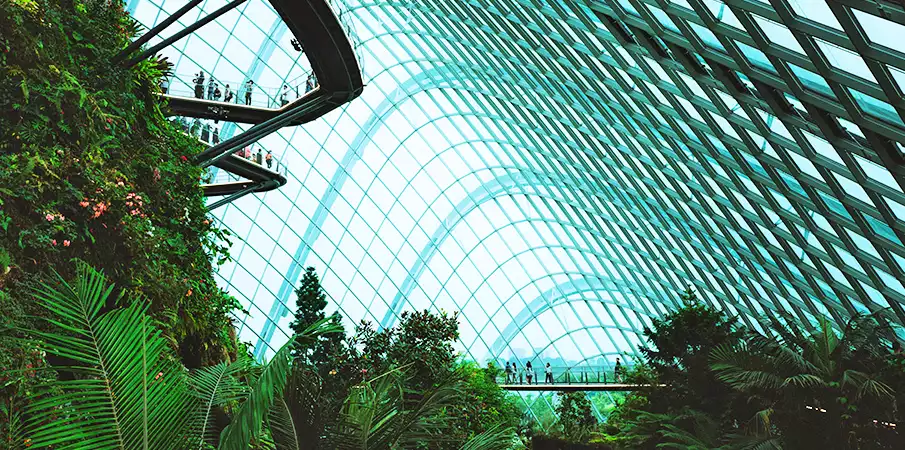
15. Singapore’s Respect for Nature
Singapore, known as a city-state full of skyscrapers and modern architecture, also earns admiration for its exceptional respect for nature. The city, not lost in concrete and steel, maintains harmony with nature and actively engages in environmental protection and sustainability.
Preservation of Green Oases: City in a Park
-
- Singapore cherishes its green spaces and parks with love and care. The UNESCO World Heritage-listed Botanic Gardens is home to many rare plant species. Gardens by the Bay, with iconic supertrees and other green areas, provide residents and visitors with places for relaxation and rejuvenation.
Combatting Climate Change: Sustainable Initiatives
-
- Singapore actively fights against climate change through sustainable initiatives. Investments in solar energy, tree planting, and emission reduction programs demonstrate the seriousness with which the city approaches environmental protection.
Biodiversity Conservation: Returning to Nature
-
- The city is also engaged in biodiversity conservation. Programs for the restoration of mangrove areas and the care of endangered animal species demonstrate a commitment to maintaining ecological balance and respect for life in nature.
Environmental Education: Conscious Society
-
- Singapore strives to create an environmentally conscious society through environmental education. School programs, exhibitions, and public awareness events aim to enlighten the population about the importance of nature conservation and sustainability.
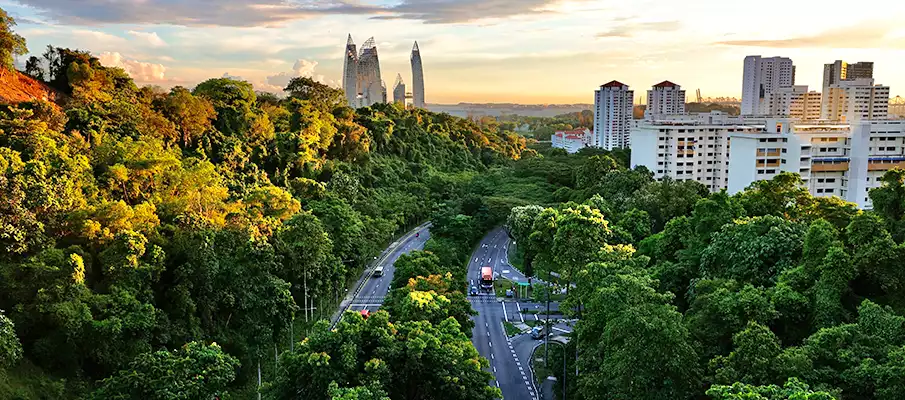
❓ FAQ + TIPS – Interesting Facts about Singapore:
1. What is the origin of the name Singapore, and what does it mean?
-
- The name Singapore has its roots in the Malay word „Singapura,“ meaning „Lion City.“ According to legend, the first Sultan of Malacca arrived here in the 14th century and named the area after an encounter with lions.
2. What is the historical background and significance of the Merlion?
-
- Merlion, a combination of a lion and a fish, is the symbol of Singapore. Erected in 1964, it represents the connection between the history of a fishing village and the legendary encounter with lions. The statue stands on the Merlion Park peninsula, offering a beautiful view of the city.
3. What is the significance and history of Kampong Glam in Singapore?
-
- Kampong Glam, once the residence of sultans, is now known for its rich cultural mix and architecture. Dominated by the Sultan Mosque, the surrounding streets are filled with boutiques, cafes, and art galleries. The district reflects the history and diversity of the Singaporean community.
4. What does the term „hawker centre“ in Singapore mean?
-
- Hawker centres are culinary paradises where a wealth of culinary traditions converge. These open markets offer diverse dishes at affordable prices. These centres are the heart of Singaporean gastronomy, providing authentic taste experiences.
5. What is the significance and function of the Supertrees in Gardens by the Bay?
-
- Supertrees are artificial tree structures in Gardens by the Bay. Besides their aesthetic appeal, they serve functional purposes. Acting as vertical gardens, they harness solar energy and function as waste filters. Their visual enchantment is heightened by an evening light show, making them among the most visited spots in central Singapore.
6. Why is Orchard Road considered the shopping hub of Singapore?
-
- Orchard Road is a world-renowned shopping street offering endless shopping possibilities. From luxury boutiques to fashion and electronics stores, it caters to diverse preferences. Its central location and wide array of offerings make it the most popular shopping destination in Singapore.
7. What is the significance and history of the Chinese quarter in Singapore?
-
- Chinatown in Singapore is full of history and culture. Built in 1822, it now features traditional Chinese temples, markets, restaurants, and unique traditional architecture. It is a fascinating place where you can explore the richness of Chinese heritage.
8. What is the role of Sentosa Island in Singaporean tourism?
-
- Sentosa Island serves as a leisure paradise and entertainment destination. It offers beaches, luxury resorts, Universal Studios Singapore, golf courses, and attractions like Adventure Cove Waterpark. It is an ideal place for relaxation and entertainment, easily accessible from the city center.
9. Why are the Botanic Gardens significant, and what can be expected?
-
- Singapore Botanic Gardens are considered among the best in the world. Home to many rare plants and orchid gardens, it is a must-visit for nature and botany enthusiasts. The orchid collection even has its dedicated section.
10. What is the significance of Marina Bay Sands and what does it offer to visitors?
-
- Marina Bay Sands is an iconic symbol of Singapore. Comprising three towers connected by a high-rise swimming pool, it offers not only a luxurious hotel but also a casino, shops, restaurants, and an unforgettable panoramic view of the city.
11. Why is Little India considered a unique and authentic place in Singapore?
-
- Little India is a vibrant quarter full of Indian culture, shops, and restaurants. The streets are filled with the aroma of exotic spices and traditional Indian music. It’s a place where you can experience the richness of Indian heritage and taste authentic Indian cuisine.
12. What are the best ways to get around in Singapore?
-
- Public transportation in Singapore is efficient and extensive, including the subway, buses, private taxis, and shared rides, as well as ferries. Tourists can use unlimited ride cards to efficiently explore the city. The metro, in particular, is a popular choice, taking you to the most important locations.
13. What is Singapore’s role in the world economy?
-
- Singapore is one of the most significant financial centers in the world and a global trade hub. Its economy is based on innovation, financial services, and logistics. Its open approach to trade and strategic location make it a key player in Southeast Asia.
14. What is the currency of Singapore and where to exchange money?
-
- The currency of Singapore is the Singapore Dollar (SGD). The Singapore Dollar is the only official currency used in Singapore, and it is abbreviated as SGD. In Singapore, you can use Singapore Dollars for most common transactions, both in cash and through contactless methods using cards or digital payment. Money exchange to Singapore Dollars is possible at banks, exchange offices, and authorized money changers. Exchange facilities are usually available at airports, shopping centers, and tourist-frequented areas in Singapore.
15. What are the safety aspects and laws concerning tourists in Singapore?
-
- Singapore is known for its high level of safety. Tourists should respect local laws, such as the prohibition of chewing gum in public transportation, and ensure their behavior aligns with the local culture. Police are always willing to help and provide information.
BOOK a TOUR / ACTIVITY in Singapore ➜
| Top 10 Fascinating Facts About Singapore | Description |
|---|---|
| 1. The Merlion – Iconic Symbol of Singapore: | The Merlion, with the body of a fish and the head of a lion, is Singapore’s iconic symbol. Built in 1972, this mythical creature represents the city’s humble origins as a fishing village (the fish tail) and its transformation into the „Lion City“ (the lion head). The Merlion stands as a testament to Singapore’s rich history and vibrant identity. |
| 2. Marina Bay Sands – Architectural Marvel: | Marina Bay Sands is a breathtaking architectural marvel that dominates Singapore’s skyline. Opened in 2010, it features a stunning rooftop pool, observation deck, and a unique design that includes three towers connected by a sky terrace. This integrated resort complex is a symbol of Singapore’s modernity and ambition. |
| 3. Gardens by the Bay – Urban Oasis: | Gardens by the Bay is a lush green oasis in the heart of Singapore. This sprawling garden spans 101 hectares and features iconic structures like the Supertree Grove and Flower Dome. It showcases Singapore’s commitment to sustainability and provides a serene escape within the bustling cityscape. |
| 4. Singapore’s Hawker Centers – Culinary Delight: | Singapore is renowned for its hawker centers, bustling food havens that offer a diverse array of delicious local dishes. From Hainanese chicken rice to laksa and chili crab, these centers celebrate Singapore’s multicultural culinary heritage, providing an affordable and delightful dining experience for locals and visitors alike. |
| 5. Changi Airport – World’s Best Airport: | Changi Airport consistently ranks as the world’s best airport, known for its exceptional facilities and services. With amenities like the Jewel Changi complex, featuring the Rain Vortex and Canopy Park, the airport goes beyond transportation, offering a unique and enjoyable experience for travelers. |
| 6. Sentosa Island – Entertainment Paradise: | Sentosa Island is Singapore’s playground, boasting an array of attractions and entertainment options. From Universal Studios Singapore to beautiful beaches and adventure activities, Sentosa showcases Singapore’s commitment to creating a world-class destination for leisure and entertainment. |
| 7. Peranakan Culture – Unique Heritage: | Singapore celebrates its Peranakan heritage, a unique blend of Chinese, Malay, and Indonesian cultures. The Peranakan Museum highlights this rich cultural fusion with exhibits showcasing traditional clothing, intricate beadwork, and culinary traditions. It reflects Singapore’s multicultural identity and appreciation for diverse heritages. |
| 8. Singapore’s Strict Laws – Clean and Safe City: | Singapore is known for its strict laws, contributing to its reputation as a clean and safe city. The city-state’s commitment to cleanliness, orderliness, and safety plays a crucial role in shaping its urban landscape and providing residents and visitors with a secure environment. |
| 9. Singapore’s Supertrees – Vertical Gardens: | The Supertrees in Gardens by the Bay are vertical gardens that serve both aesthetic and environmental functions. These towering structures mimic the ecological functions of trees and showcase Singapore’s dedication to sustainable urban development. The Supertrees are not just landmarks; they represent Singapore’s commitment to a greener future. |
| 10. The Raffles Hotel – Colonial Elegance: | The Raffles Hotel, with its colonial architecture and rich history, is a symbol of luxury and elegance in Singapore. Established in 1887, the hotel has hosted numerous dignitaries and celebrities. It stands as a reminder of Singapore’s colonial past and its evolution into a modern, cosmopolitan city. |
Culture in Thailand|Food and cuisine in Thailand|Food and cuisine in Singapore|Food in Laos|Food in Cambodia|Food / Cuisine in Malaysia
